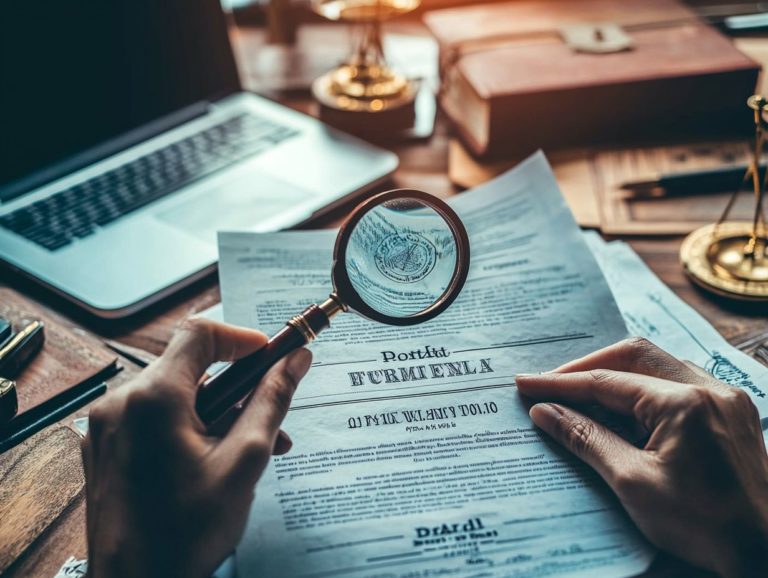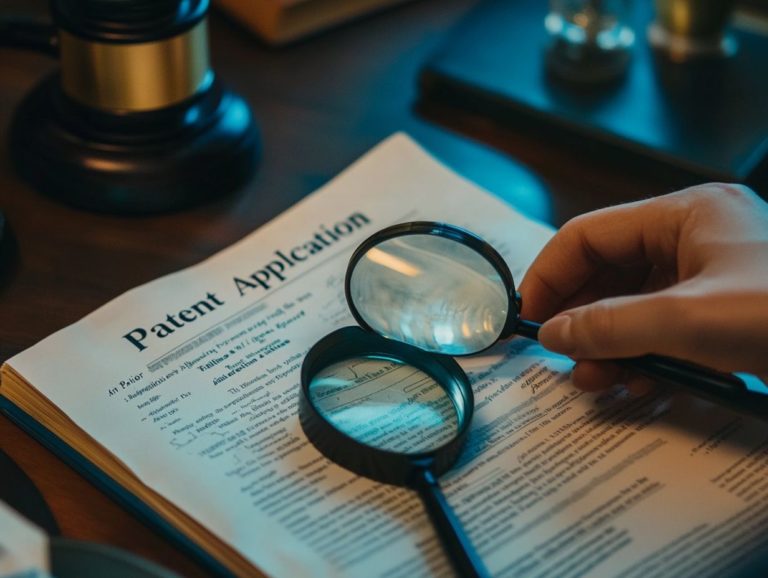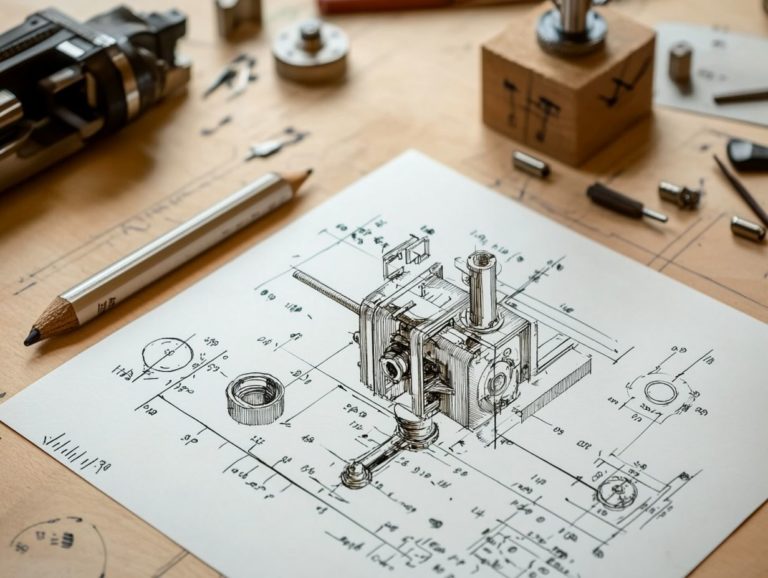What to Do if Your Patent is Infringed
Patent infringement can feel like a formidable challenge for inventors and businesses, threatening your intellectual property rights and stifling innovation.
This article delves into the various forms of infringement, outlining the crucial steps you should take if you find yourself a victim and the legal avenues available to safeguard your ideas.
It also guides you on how to gather the necessary evidence to build a robust case, explores the potential outcomes of infringement disputes, and highlights proactive measures you can adopt to prevent future violations.
Whether you re a seasoned inventor or just beginning your journey, understanding these elements is vital for protecting your creative pursuits.
Contents
- Key Takeaways:
- Understanding Patent Infringement
- Steps to Take When Your Patent is Infringed
- Proving Patent Infringement
- Possible Outcomes of a Patent Infringement Case
- Preventing Patent Infringement
- Frequently Asked Questions
- What to Do if Your Patent is Infringed?
- How do you know if your patent has been infringed?
- What steps should you take if you suspect infringement?
- What are the potential legal actions you can take if your patent is infringed?
- What is the first step in taking legal action for patent infringement?
- What if the infringer refuses to stop using your patented invention?
Key Takeaways:

When facing patent infringement, take action now to protect your rights. This includes gathering evidence, sending a cease and desist letter, and consulting with a patent attorney.
To prove patent infringement, you will need to provide strong evidence and documentation such as a patent certificate, product samples, and detailed comparisons between your patent and the infringing product.
If your patent is infringed, you may be entitled to monetary damages or an injunction to stop the infringement. Carefully consider all your legal options and seek guidance from a patent attorney.
Understanding Patent Infringement
Understanding the nuances of patent infringement is vital for patent owners, as it significantly influences their patent rights and the enforcement of their intellectual property.
Patent infringement arises when someone makes, uses, sells, or offers to sell a patented invention without permission. This infringement can be split into two categories: direct infringement, which violates the explicit claims of the patent, and indirect infringement, where a party contributes to or encourages another to infringe.
To navigate potential disputes effectively, you need to be well-versed in patent application procedures and understand the intricacies of patent validity.
Definition and Types of Infringement
In the realm of intellectual property law, understanding patent infringement is essential for you, whether you are a patent owner or a potential infringer. This understanding encompasses both direct and indirect infringement, each with its own unique criteria.
Direct infringement occurs when you make, use, sell, or import a patented invention without obtaining authorization from the patent holder. For example, if someone copies your patented gadget without asking, that’s direct infringement.
Conversely, indirect infringement involves contributory actions, where you might assist or encourage someone else in infringing activities, complicating the question of liability.
The clarity of patent claims is pivotal in identifying infringement, as these claims delineate the boundaries of what is protected. Effective patent protection solidifies these rights and significantly mitigates the risks of infringement, thereby safeguarding innovation and investment across various industries.
Steps to Take When Your Patent is Infringed
When you suspect that your patent rights have been infringed upon, it s crucial to act swiftly and strategically to safeguard your intellectual property. The steps you take early on can profoundly influence the outcome of any potential infringement lawsuit.
Engaging a skilled patent attorney is essential; they can offer invaluable insights into your situation and help you formulate an effective litigation strategy, including options like cease-and-desist letters and settlement negotiations.
Recognize the importance of timely documentation and evidence collection, as this can significantly shape your legal approach moving forward.
Initial Actions to Protect Your Rights

When your patent rights are compromised, the first step is to gather evidence. Consult a patent attorney who will guide you through the process.
Written proof that someone else is using your invention without permission can strengthen your case. Your attorney will help you collect this evidence and draft a cease-and-desist letter to notify the violator.
Understanding patent rights is crucial. Early mistakes can lead to serious legal consequences. Act quickly to protect your rights!
Legal Options and Considerations
Navigating patent infringement requires careful consideration of your legal options, including the possibility of filing an infringement lawsuit. Consider settling the case. This can lead to a faster and cheaper resolution.
Litigation and settlement each have risks and benefits. If successful, litigation can lead to substantial damages. However, settlements often involve reasonable royalty calculations based on past agreements.
Engaging a patent attorney is essential. They will explain your rights and help you evaluate the potential consequences of each option.
Proving Patent Infringement
Proving patent infringement requires a meticulous approach. You must gather thorough documentation and compelling evidence to establish both the validity of your patent and the occurrence of infringement.
The intricacies of patent litigation often revolve around how the terms of your patent are interpreted. This determines whether the accused product or service falls within that scope.
As a patent owner, prepare a robust case that includes expert testimony, prior art, and detailed comparisons between your patent claims and the alleged infringement.
Required Evidence and Documentation
The evidence and documentation you need must be curated with precision. Focus on both the patent’s validity and the actions of the defendant.
To build a compelling case, gather specific types of evidence. This includes detailed documentation of prior art that could challenge the legitimacy of your patent.
Expert analyses are invaluable. Specialists can clarify how the patented invention functions and whether it has truly been infringed upon.
Every step taken during the infringement investigation should be meticulously documented. Thorough records help establish a clear timeline and context, ensuring every claim you make is backed by strong, credible evidence.
Possible Outcomes of a Patent Infringement Case
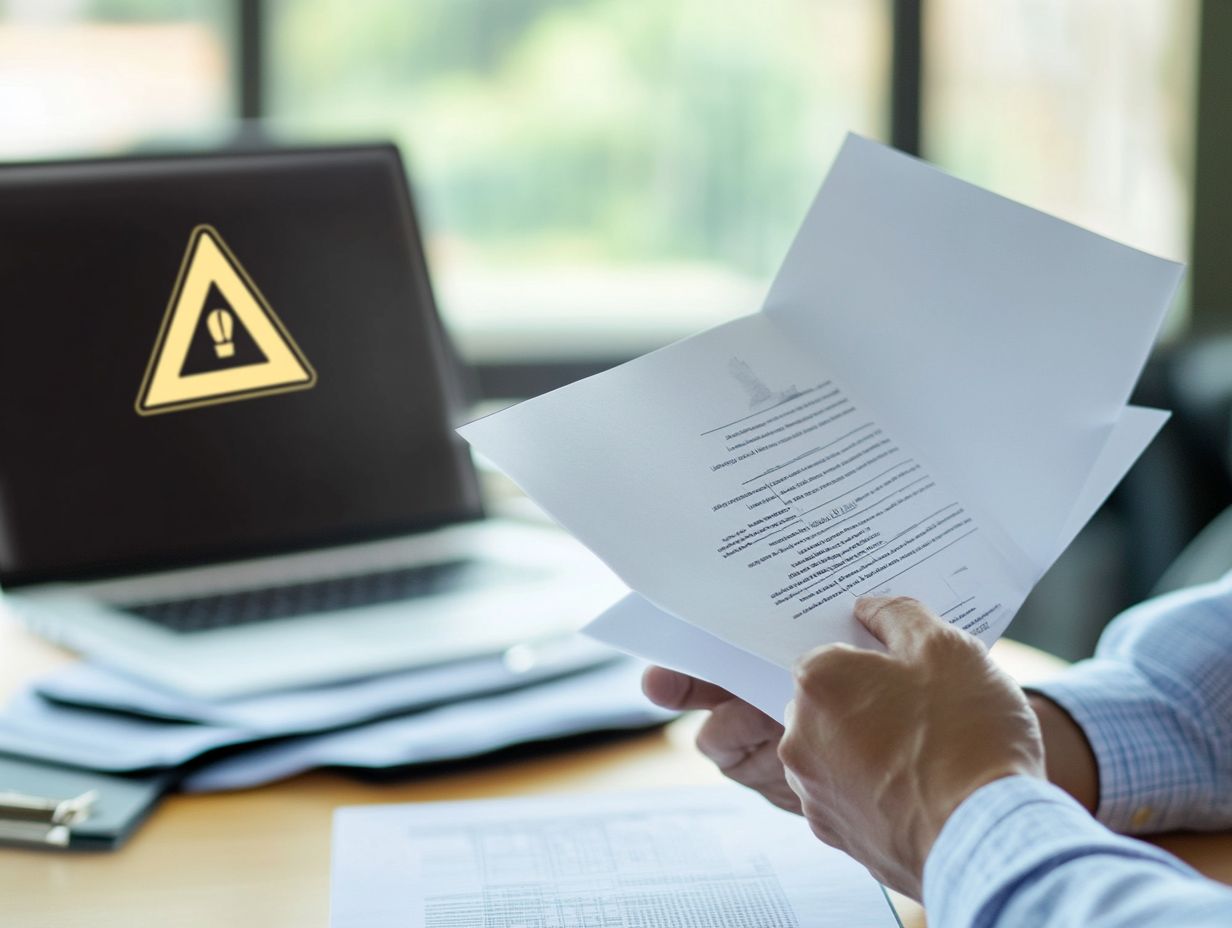
The outcomes of a patent infringement case can vary greatly, depending on your litigation strategy and the evidence you present.
This variability can lead to potential damages or remedies that significantly impact your rights as a patent owner.
Potential Damages and Remedies
If you successfully prove infringement, you may be entitled to a range of damages and remedies. This could include a reasonable royalty based on the infringer’s profits or the market value of your patent.
These damages can vary significantly, including lost profits that you would have earned had the infringement not occurred. This underscores the critical role of your patented invention in the market.
Beyond monetary compensation, you can seek remedies like injunctions to prevent the infringer from continuing their unlawful activities.
Additionally, you may pursue the restoration of your patent rights, allowing you to regain full control over your intellectual property and thwart future violations. Each of these options is designed to protect your interests as a patent holder while affirming the importance of innovation in the marketplace.
Preventing Patent Infringement
Preventing patent infringement is just as vital as enforcing your patent rights. It requires a blend of proactive protective measures and carefully crafted strategies throughout the patent application and prosecution processes. By taking these steps, you position yourself to safeguard your innovations effectively.
Protective Measures and Strategies
Implementing protective measures during your patent application process is crucial for safeguarding your patent rights and minimizing the risk of infringement. You need a carefully crafted set of patent claims to achieve strong protection, as these claims define the precise boundaries of your invention.
A thoughtful drafting process can encompass all potential variations of your invention, effectively shielding it from unauthorized use. Conducting thorough searches through the USPTO database for existing patents offers invaluable insights, helping you identify prior art that may impact your application. This proactive approach increases your chances of patent approval and strengthens your patent rights.
Frequently Asked Questions
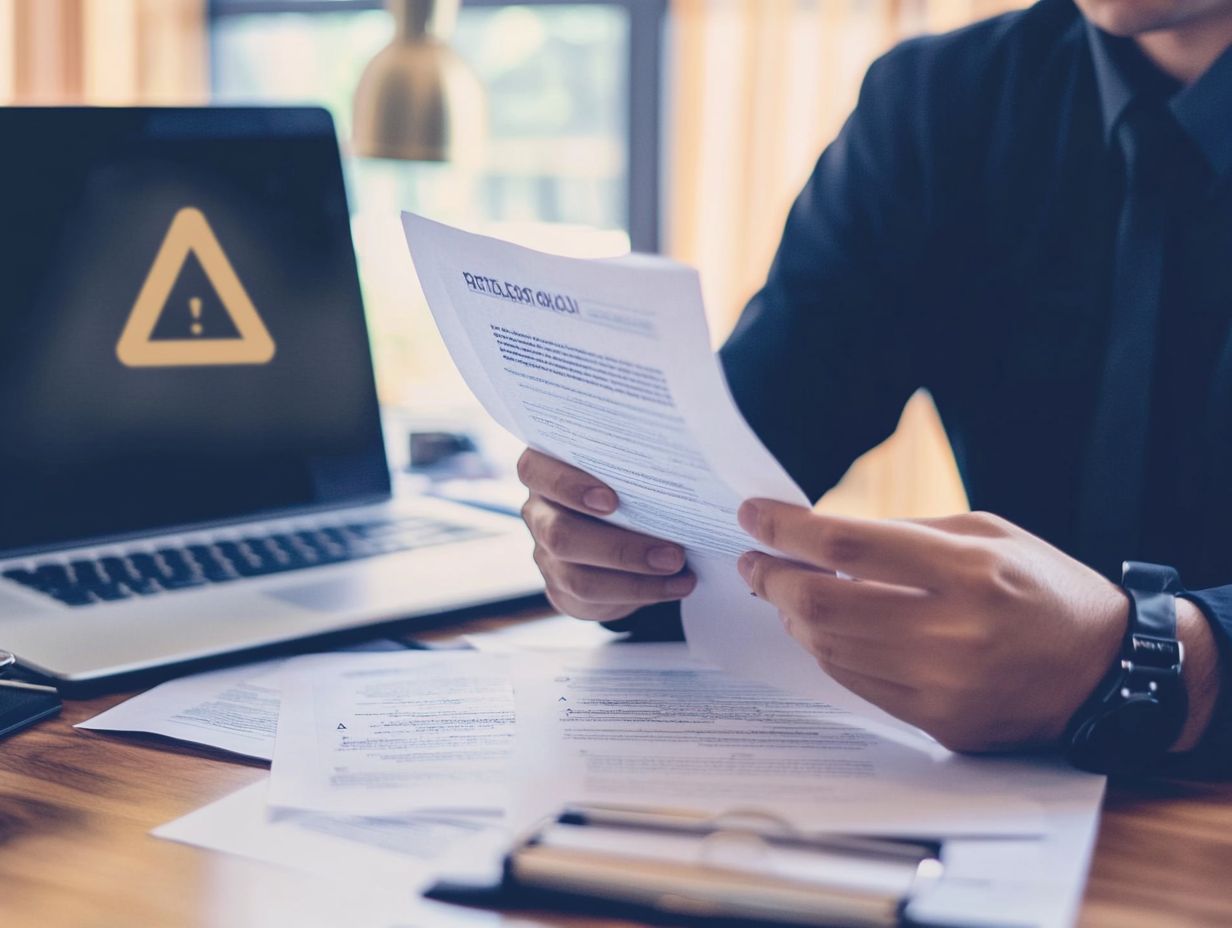
What to Do if Your Patent is Infringed?
Act quickly if you believe your patent is infringed! Every moment counts. It is crucial to take action as soon as possible.
How do you know if your patent has been infringed?
You may become aware of infringement if you notice someone selling a product or using a process very similar to your patented invention without your permission.
What steps should you take if you suspect infringement?
First, gather evidence to support your claim of infringement. This could include images, videos, or documentation of the infringing product or process. Consult with a patent attorney to discuss your options and potential legal actions.
What are the potential legal actions you can take if your patent is infringed?
You may be able to file a lawsuit against the infringer to stop them from using your patented invention and seek monetary damages for any losses incurred. Additionally, you could negotiate a licensing agreement with the infringer to allow them to legally use your patent in exchange for payment.
What is the first step in taking legal action for patent infringement?
The first step is to send a cease and desist letter to the infringer. This letter informs them of the infringement and requests that they stop using your patented invention immediately.
What if the infringer refuses to stop using your patented invention?
If the infringer refuses to stop after receiving the cease and desist letter, you may need to file a lawsuit in federal court. It is important to work closely with your patent attorney to build a strong case and protect your rights as a patent holder.


